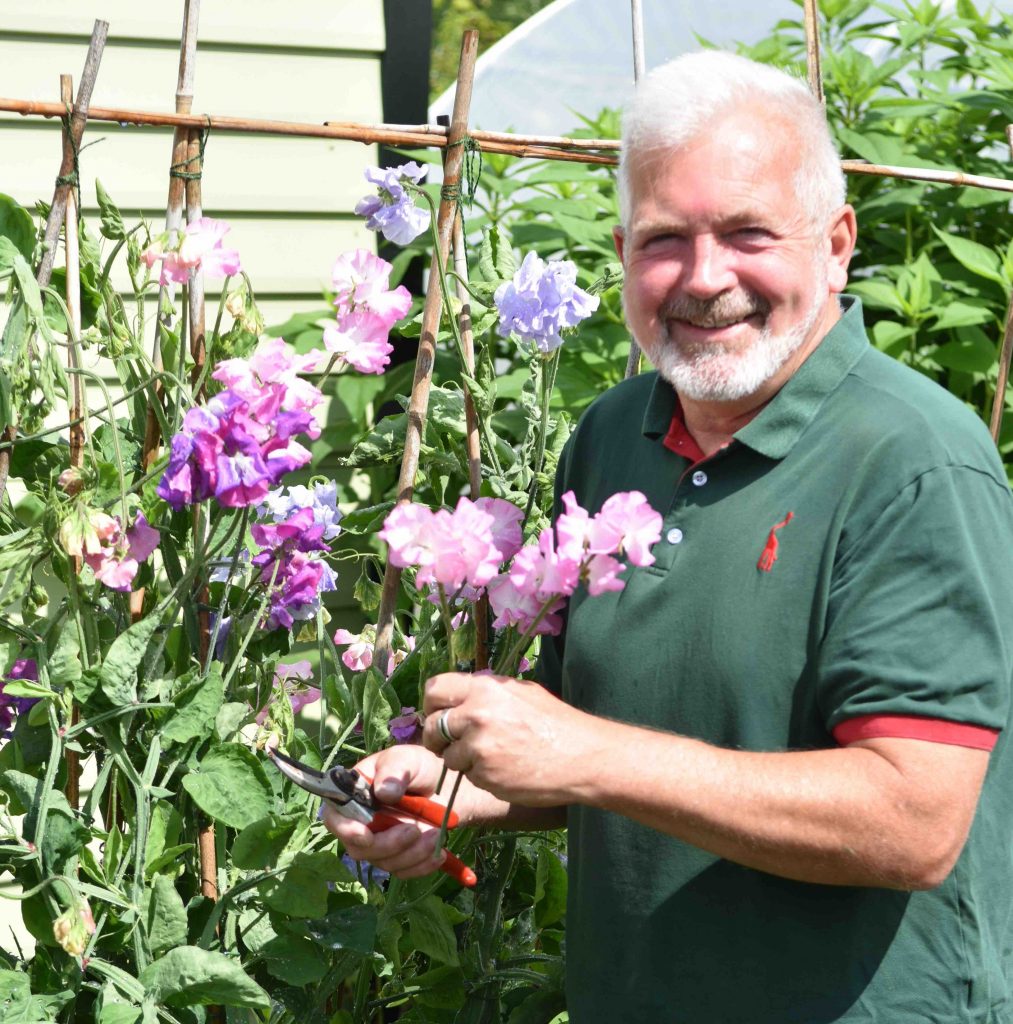
With so many different plants to grow, I can’t grow all my favourite plants every year. I am sure you are the same. But there are a few, special plants that I like to have every summer. Many of these are fragrant or aromatic. I always like to have at least a few wallflowers, I always have a few nasturtiums, which remind me of my childhood – though they take care of themselves – and I must have some sweet peas. A bunch of sweetpeas is as much a part of summer as strawberries and Wimbledon!
Sweetpeas are one of those plants that are easy to grow, but need a bit of effort to grow well. If you have ever tried, and been told you can just chuck some seeds in a pot, and have been disappointed, this post is for you because I want to briefly explain how to get the best from them.
Firstly, I want to say a word about dwarf sweet peas, often recommended for hanging baskets and pots with reference to the basic habits of sweet peas.
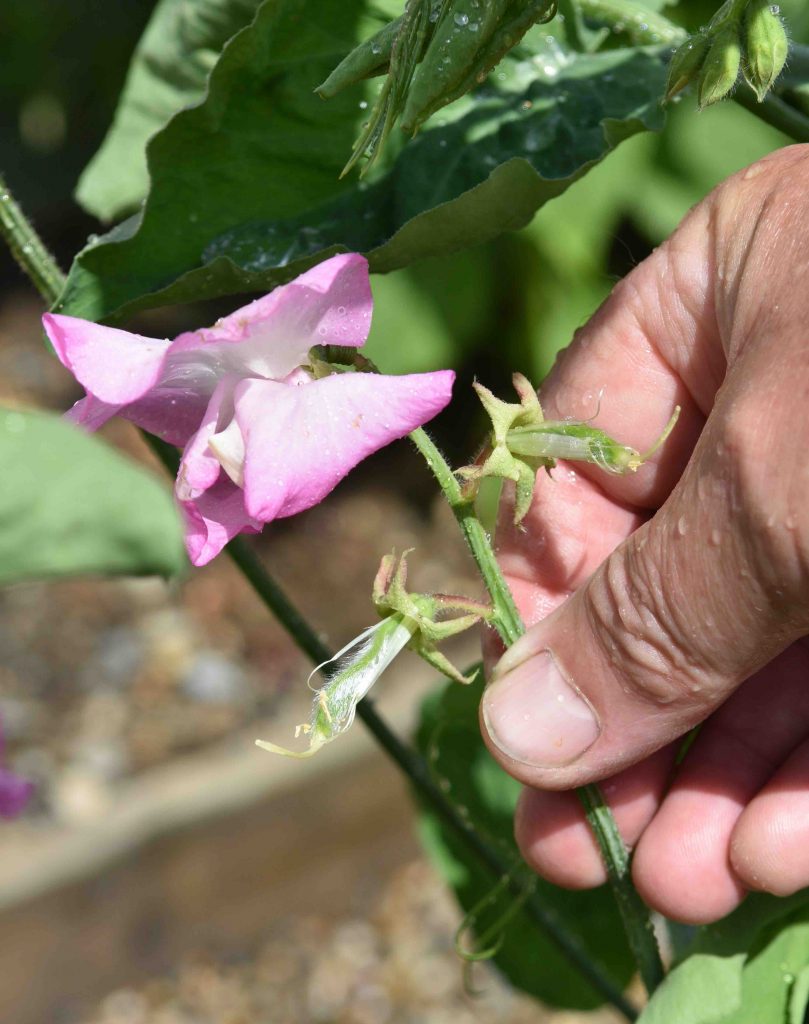
Sweet peas are annual plants, meaning they grow from seed, flower, set seed and die within a year. All they want to do is set seed. so if you let the plants produce seed pods, which they do as soon as the petals drop, the plants will stop blooming. The flower stems will get shorter, growth will stop and you will get a display for weeks rather than months.
So it benefits your plants if you pick the flowers for the house or at least remove faded flowers regularly.
We usually want our patio pot flowers to bloom all summer but dwarf sweet peas will not, even if they are regularly deadheaded. And if you don’t pick them over at least twice a week they won’t flower for more than a month. Sweetpeas also like plenty of moisture, a rich soil and lots of water. If they get dry they are prone to mildew and to aphids.
That is why I don’t rate them in baskets.
All this seems a bit negative but I don’t mean to be. With a bit of effort your sweetpeas can be wonderful.
You can grow them in pots but, if you do, choose a large pot, ideally 45cm deep and wide or more. In the garden, choose a sunny site and rich soil. You can grow them up an obelisk, a fence or up canes. Because it is easier to look after them and to find and remove old flowers if the plants are trained, rather than just allowed to ramble, I prefer to grow them up canes. But you will get a good display if they are allowed to do their own thing.
Sweet peas are easy to grow from seeds. The seeds are large and easy to handle and they don’t need high temperatures to germinate. You can sow in autumn or in spring.
The seedlings do not like root-disturbance so sow three seeds in a 9cm pot, and plant them out as a clump or sow in individual cell trays. Do not buy pots of crowded seedlings. If a pot with a dozen or more seedlings is planted out the seedlings will struggle for water and space and won’t flower for long.
Autumn-sowing
This will produce the best plants, the earliest flowers and flowers with long, strong stems. This is because the seedlings grow slowly and develop a good root system before fast growth starts in spring. If you sow in October or November the seeds will germinate in normal outside temperatures. The seedlings are hardy but it is best to keep the plants in a coldrame or cold greenhouse. Keep them moist and protect them from mice. In March they can be planted out to grow.
Spring sowing
Seed can be sown in Spring, from February to April. The seedlings will grow and flower but, because the plants will be rushing to bloom without making such a substantial root system they won’t flower for so long.
Once the seedlings are up, whenever they are sown, you should pinch out the tips, once there are four or five leaves. This is to encourage side shoots which always grow more vigorously than the main shoot.
Seedlings can be planted out in March.
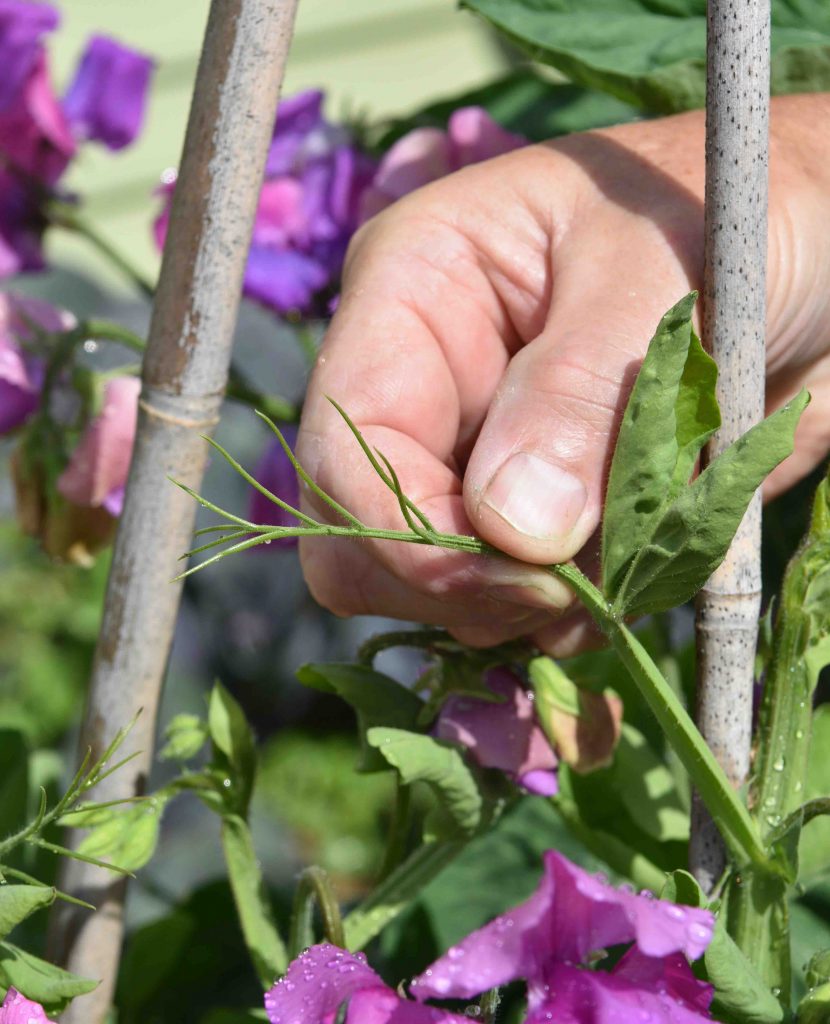
To get the best, long stems for cutting, or for the local flower show, there are a few things you can do.
Tie the stems to the canes so they are upright. I make my own ‘rings’ from wire to hold them up. You can also buy ‘sweetpea rings’. Remove the side shoots from the mains stems as soon as possible so all the ‘effort’ goes into the main stems and flowers. Otherwise you get a tangle of growth and shorter flower stems – OK for garden colour but not for cutting.
Remove the tendrils from the leaves as soon as possible. (above). This helps to control the plants, improves vigour and prevents the tendrils ‘grabbing’ the flowers and twisting the stems.
The good news is that the more flowers you cut, the more flowers you will get.
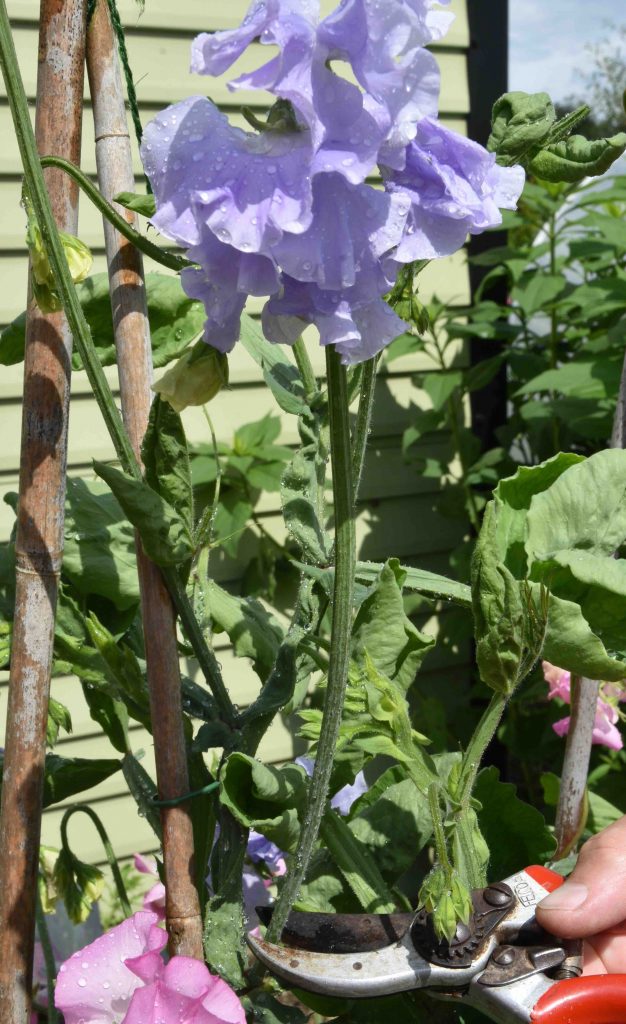
Always allow all the flowers on a stem to open before you cut them – unopened buds will not open once cut.
Water and feed your plants to promote new growth and flowers.
And as the plants start to deteriorate, allow some of the pods to set. Sweet peas will breed true to type so you can keep your favourite sweet peas for another year.
Sweetpeas are a bit of effort but they are worth it. Buy your seeds now, ready for autumn sowing.
In the garden
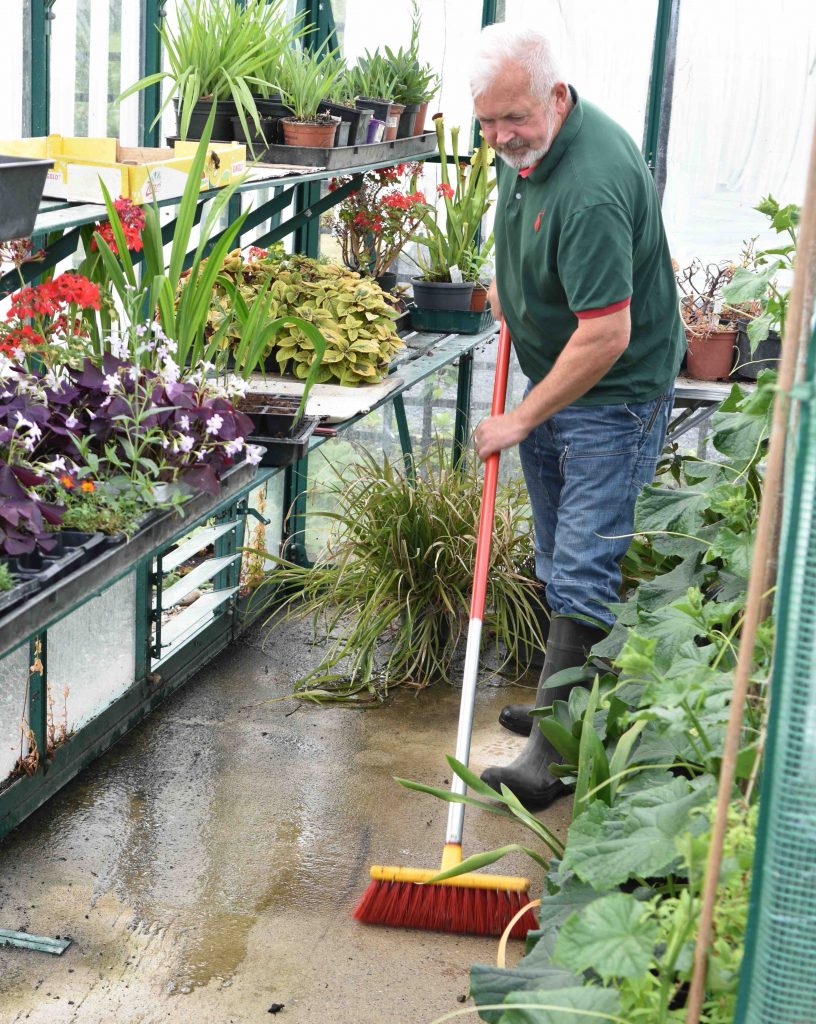
Keep the greenhouse cool by wetting the floor in hot weather. I like to keep the greenhouse nice and tidy at this time of year when it is less full than in winter. Clearing away old pots and debris reduces pests.
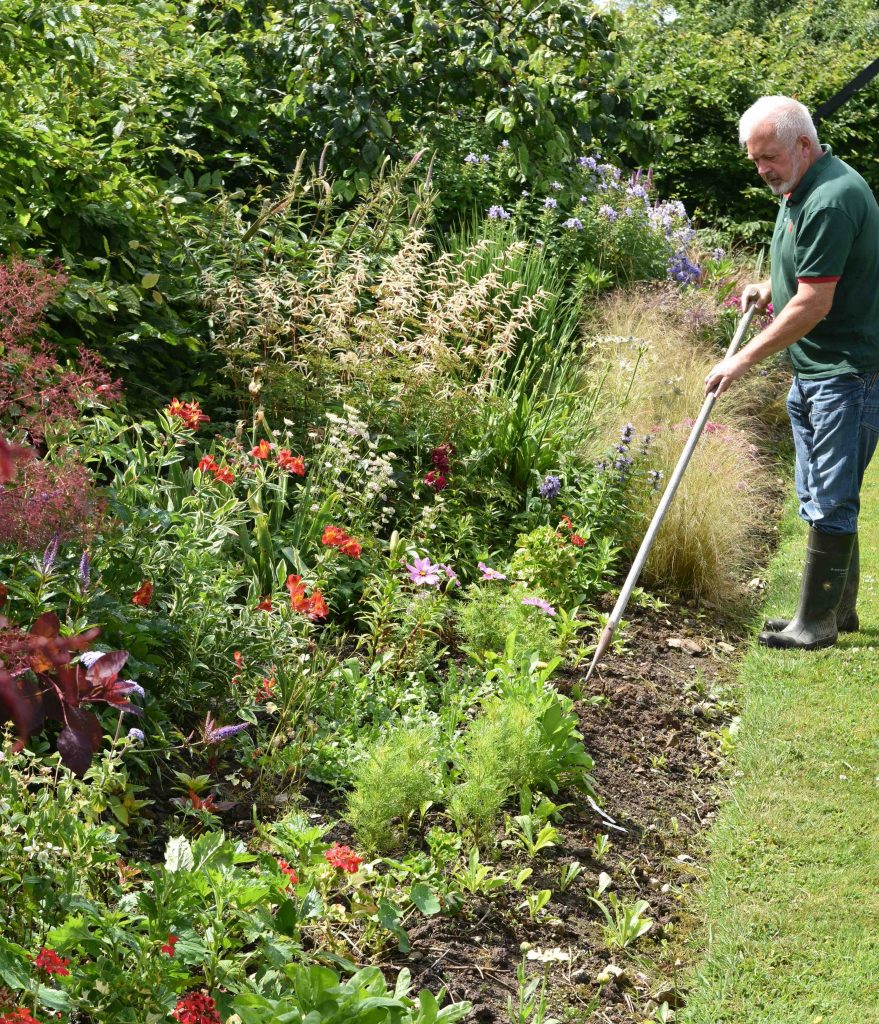
Keep weeds in borders under control by hoeing regularly. If the weather is dry then just leave the weed seedlings to wilt on the surface, but you need to hoe every few weeks so you kill the weeds before they flower.
Keep your tomatoes watered and fed to keep them healthy and cropping.